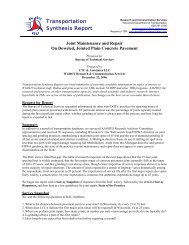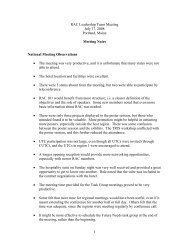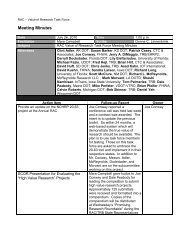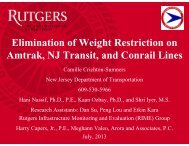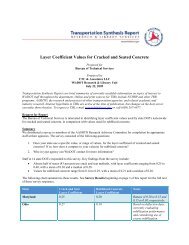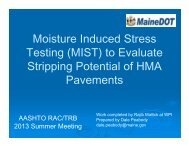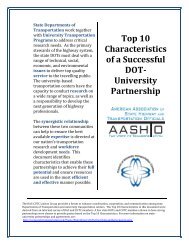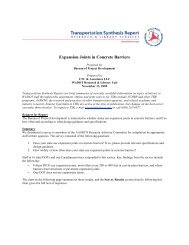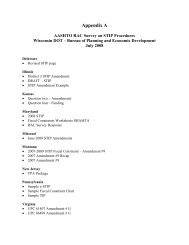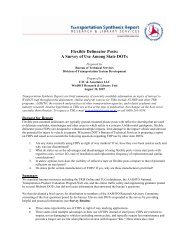PART IV: Summary of Comments - SCOR/RAC
PART IV: Summary of Comments - SCOR/RAC
PART IV: Summary of Comments - SCOR/RAC
You also want an ePaper? Increase the reach of your titles
YUMPU automatically turns print PDFs into web optimized ePapers that Google loves.
<strong>PART</strong> <strong>IV</strong>: <strong>Summary</strong> <strong>of</strong> <strong>Comments</strong>17-May-10Reviewer <strong>Comments</strong> Distribution <strong>of</strong> Ratingsfor all DOT’s.■ Understanding what needs to be done to revise design and material standards to achieve a 100 year life for different types<strong>of</strong> pipe would be highly beneficial to DOT's.■ Pipe installation and inspection guidelines to meet the service life for various pipe materials should also be developed.■ [Rating: 4] The problem statement indicates that AASHTO 100-year service life also pertains to LRFD specifications forpipe. The 100 year life requirement applies to buried pipe (concrete, steel and plastic). The problem statement is clearwith considerable detail and <strong>of</strong> national relevance particularly w/ regard to the increased use <strong>of</strong> plastic pipe.Research Advisory Committee■ If this research gets approved, it must address the very real issue <strong>of</strong> long term risk due to fire damage. In areas <strong>of</strong> thecountry where wildfires are very common (like Oklahoma), this risk to the various pipe materials must be considered inany legitimate research on the subject■ Has little promise and does not address issues that have high risk in transportation■ This problem statement rates high in comparison to the others reviewed. A 100-year service life is needed for pipe, and itwill be required by AASHTO LRFD Bridge Specs eventually. There is a clear and present need for this research; it isappropriate for NCHRP, and it has a high pay<strong>of</strong>f potential.■ very important research■ This is an overwhelming, but worthwhile effort. This proposal is a joint effort between the Sub on Bridges and the Subon Materials.Other■ [Rating: 4] This is the Number 4 priority project for the SOM.Item #32:F-02Best Practices for Preserving Bridge decks(17)(46)NR 0 1 2 3 4 5<strong>SCOR</strong> 3 5 7 2<strong>RAC</strong> 1 1 1 7 16 11 12Standing Committee on Research■ We already know the best practices for preserving bridge decks. The project will not likely provide new information.■ Support combining with F-01■ This is a major concern for Caltrans and a very high priority.■ Combine with F-03 for total budget <strong>of</strong> $300,000■ Make sure that the evaluation <strong>of</strong> effectiveness for each treatment includes field testing. Combine with F01.■ combine with F-30■ Combining with F-01.■ Maybe combine under F-01 with no additional funding.■ [Rating: 5] Deck performance and the performance <strong>of</strong> deck treatments has been identified by many states as a major area<strong>of</strong> interest and determining best practices in bridge deck maintenance and cost/benefit <strong>of</strong> deck treatments would be agreat asset to bridge managing agencies. The FHWA LTBP program has identified this topic as a top priority for theprogram and this NCHRP program would be a great compliment to be able to dig into the detail <strong>of</strong> the topic and provide<strong>IV</strong>-19



